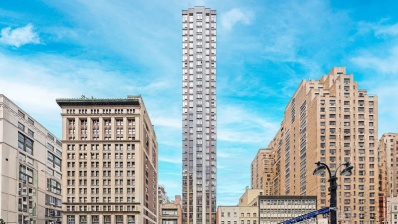Inflation, in its simplest form, is the decrease in the purchasing power of a currency–this means you can buy less with the same amount of dollars because the cost of products and services around you went up. A reasonable yearly increase in the cost of goods and services (ideally not more than 2%) is considered good for the economy because it encourages demand, which increases production and boosts supply, keeping a healthy “competition” in the economy. Problems tend to arise when inflation increases at above-average levels without a comparable increase in wages.
Two major indicators of inflation, the Consumer Price Index (CPI) and the Producer Price Index (PPI) rose to 7.9% and 10.0% in February 2022. The current increase in the CPI Index is now the steepest yearly increase since The Great Inflation in February 1980 when it hit 14.8%.
Rising inflation can meddle with the commercial real estate market (CRE) in several ways.
Inflation impacts supply and demand
When the general cost of purchasing and producing goes up, it can put a strain on development costs–remember when lumber prices peaked at a record-shattering $1,500 per thousand board feet in May 2021?. That, plus an increase in labor costs can ultimately slow down the pace of new construction and restrict the future supply of real estate inventory. This is one of the many reasons why development projects are often considered the “most risky” for investors–they are more susceptible to shifts in pricing, timelines, labor shortages, supply chain issues, permitting, and more.
However, when new construction is stunted (regardless of the reason), the value of existing inventory often goes up, especially if there is high demand for the property type. With increased demand and moderate overall supply in 2021, we saw record-breaking price appreciation and cap rate compression for most asset types, especially industrial and multifamily.
In markets with outsized demand, asking rents can rise even faster–as compared to periods of average inflation–which in turn can increase the overall value of the property (assuming cap rates hold relatively constant).
Inflation erodes the true value of cash flows
Inflation can also impact operational costs like maintenance, utilities, and insurance. When the cost to maintain a property goes up, the overall cash flow can decline. And even if the cash flow remains constant, when the purchasing power of the dollar falls, it can impact the true value of future cash flows and, ultimately, investor returns. For instance, any earned $1.00 may only be “worth” $0.93, or even $0.80, depending on the rate of inflation.
On the flip side, when the purchasing power of the dollar falls, property owners who are able to increase their net operating income (NOI) by increasing rents can help protect the true value of cash flows and subsequent investor returns.
Asset types that can be marked to market quickly in the face of rising inflation are sometimes credited with having “inflation resiliency.”
The impact of inflation varies by asset-type
Within the CRE space, inflation resiliency can range depending upon the asset class and it largely hinges on how fast and how frequently can the property owner adjust rental rates.
The shorter the lease term, the quicker an owner can change rents to keep pace with rising inflation–in theory, hospitality, multifamily, and self-storage tend to have the shortest relative lease terms. On the other end of the spectrum, a NNN fully-leased asset on a longer-term lease with predetermined rent bumps would lock the investment on a rigid rent schedule, leaving little to no opportunity to increase NOI and offset the impacts of inflation. This would look like a major retailer, such as a Starbucks or Walgreens, or a single-tenant industrial deal leased to Amazon on a long-term lease (20-30 years).
Ultimately, adjusting the NOI can increase a property’s cash flow to be comparable with the rise in inflation, helping protect the true value of future cash flows and, ultimately, investor returns. With the long-term appreciation of most real estate assets, many investors are usually in a good position during transitory periods of high inflation.
Want to learn more about how inflation and commercial real estate are related? Read the full whitepaper from the Office of our CIO.


